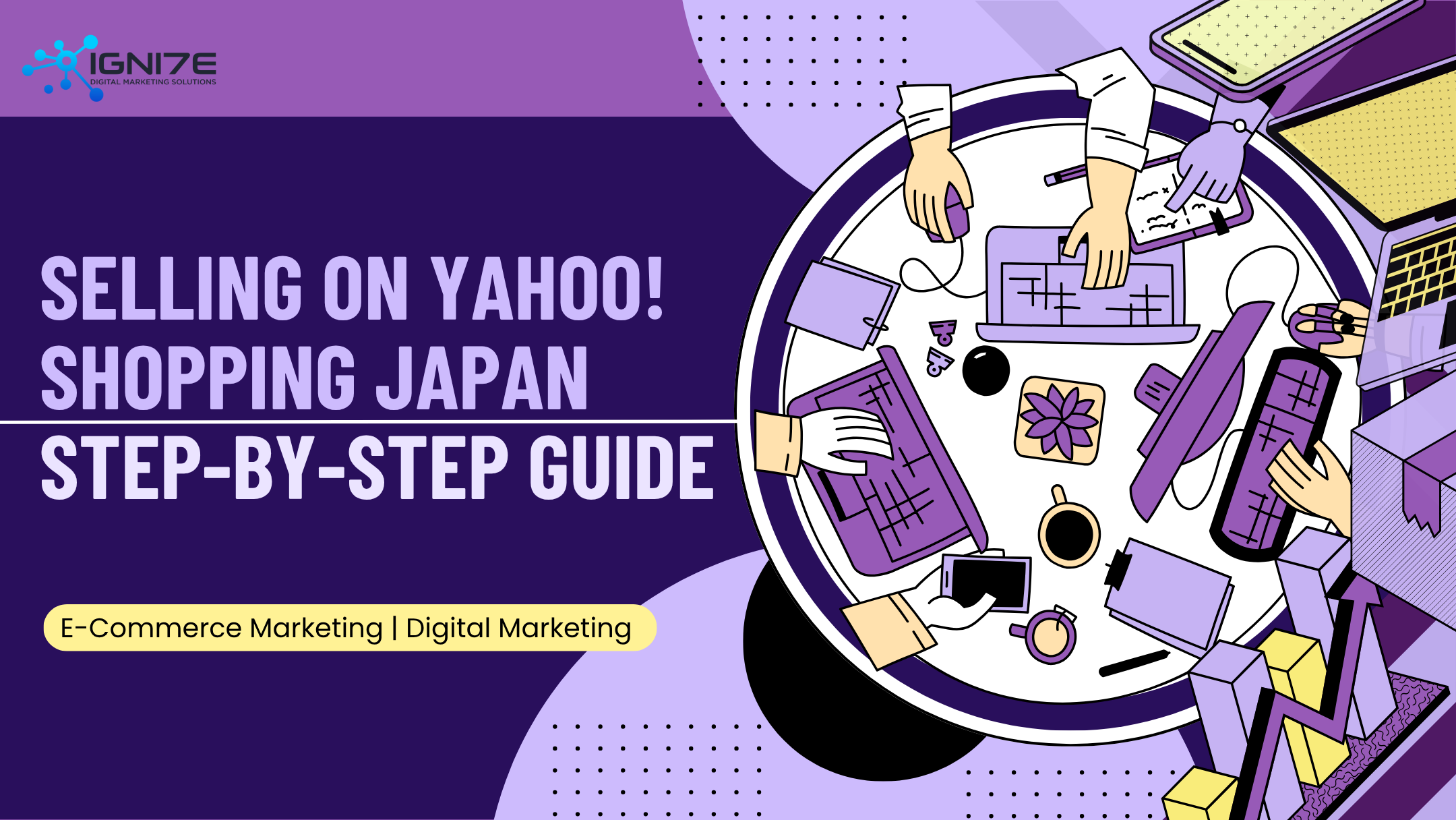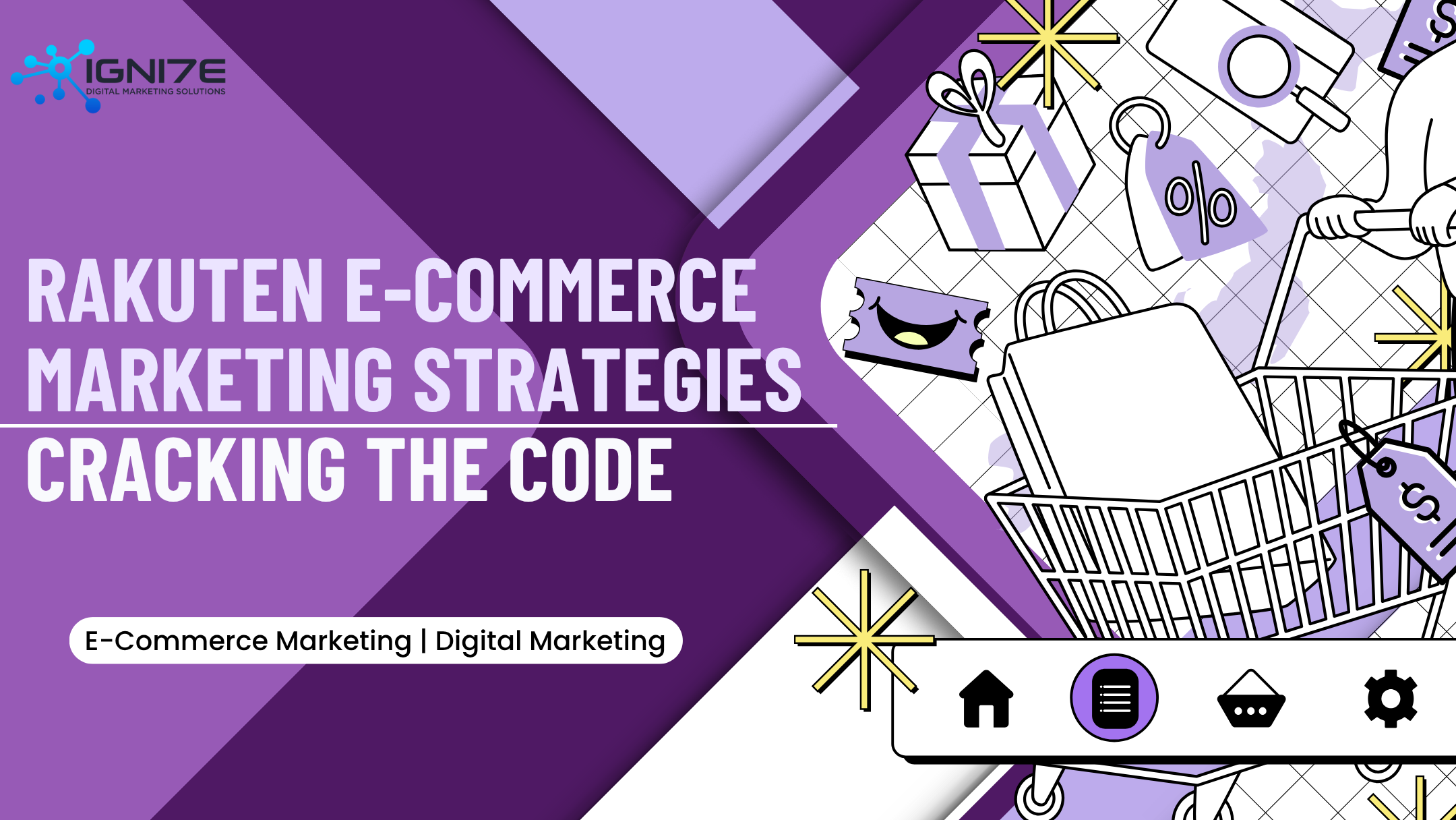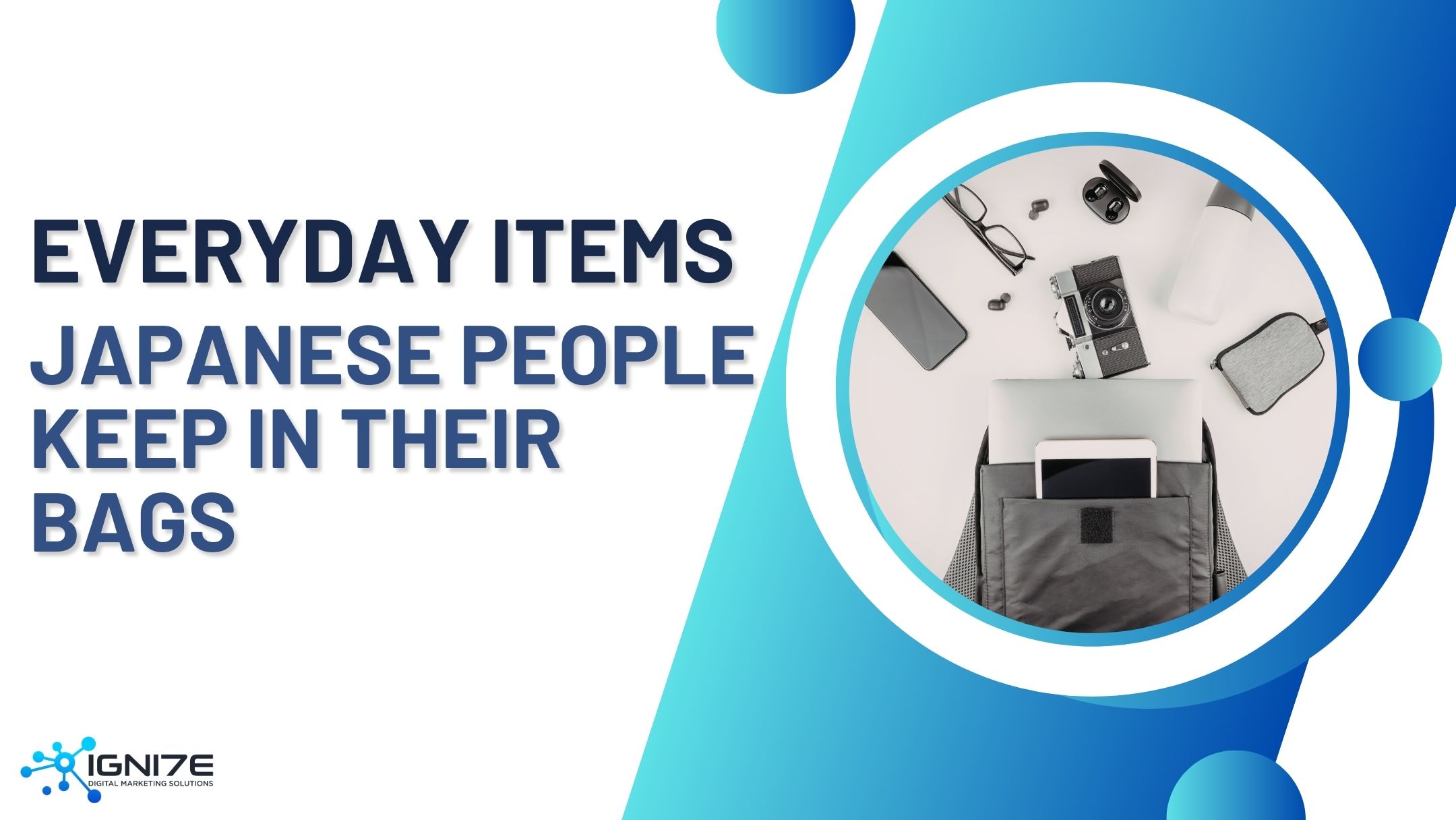Decoding Japan's Unique Amazon E-Commerce Marketing Strategies for International Businesses

Japan’s e-commerce market is one of the most lucrative and competitive in the world, and Amazon Japan stands at the center of this transformation. For international businesses, the platform represents both a gateway to millions of highly discerning customers and a challenge that requires deep cultural and strategic adaptation. Japanese consumers have high standards for quality, trust, and service, making success dependent on more than just listing products; it requires a tailored approach to marketing, branding, and compliance.
In this article, we’ll explore how Amazon Japan has grown into a dominant force, what makes its shoppers unique, and how international sellers can navigate both current strategies and future trends to build sustainable success.
Amazon’s Rise and Market Power in Japan
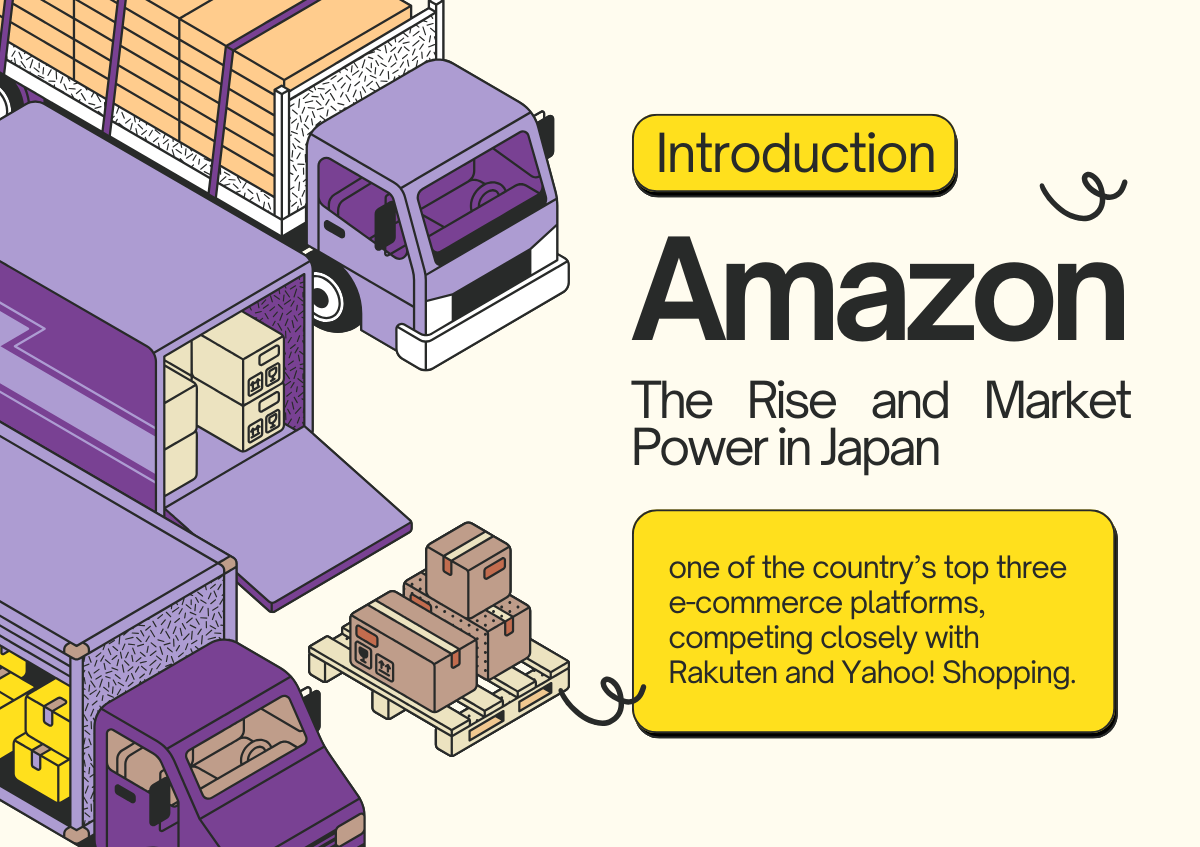
Amazon’s entry into Japan marked a turning point in the country’s e-commerce landscape. Since its launch in 2000, the platform has steadily grown into one of Japan’s most influential online marketplaces, reshaping consumer expectations around convenience, speed, and reliability. Today, Amazon Japan holds a dominant position alongside Rakuten and Yahoo! Shopping, offering both global reach and deep local integration. To understand why the platform matters so much for international sellers, it’s essential to look at how it built its foundation and where it stands in the market today.
History and Growth in Japan
Amazon entered the Japanese market in 2000, making Japan one of the company’s earliest international expansions outside the United States. From the beginning, Amazon Japan differentiated itself with its focus on convenience, speed, and customer trust; values that aligned closely with Japanese consumer expectations.
Key milestones in its growth include the rapid expansion of product categories beyond books and media, the introduction of Fulfillment by Amazon (FBA) in the mid-2000s, and the rollout of Amazon Prime in 2007. Prime’s fast and reliable delivery service quickly became a cornerstone of Amazon’s success in Japan, appealing to a culture that prizes punctuality and dependability.
Over the years, Amazon Japan has expanded its footprint with state-of-the-art logistics centers across the country, enabling same-day or next-day delivery in many urban areas. This logistics dominance, combined with a user-friendly interface familiar to global sellers, has made Amazon Japan one of the most accessible platforms for international businesses looking to enter the Japanese market.
Notably, Japan has been unique within Amazon’s global network for maintaining strong local seller representation. Unlike markets such as the U.S. or Canada, where Chinese cross-border sellers dominate, more than half of Amazon Japan’s active sellers are domestic Japanese businesses. However, recent trends show a growing influx of Chinese sellers entering the market, signaling a shift toward the patterns seen in other regions.
Market Position Today
Today, Amazon Japan is firmly established as one of the country’s top three e-commerce platforms, competing closely with Rakuten and Yahoo! Shopping. While Rakuten still holds the most significant overall share, Amazon consistently ranks as the second-largest e-commerce company in Japan, with around 23% of retail e-commerce sales in 2022.
Where Amazon truly excels is traffic and reach: in July 2023, Amazon Japan attracted over 600 million monthly visits, more than any other e-commerce platform in the country. This massive user base underscores Amazon’s role as a primary destination for Japanese online shoppers.
Another major strength is Prime adoption. Millions of Japanese consumers subscribe to Amazon Prime, not only for fast and free delivery but also for bundled services such as Prime Video and Kindle. This ecosystem effect makes Prime members highly engaged and loyal, a crucial factor for international sellers aiming to build recurring sales.
In short, Amazon Japan may trail Rakuten in market share, but it leads in visibility, convenience, and consumer engagement. For international businesses, this combination of scale, trust, and infrastructure makes it one of the most attractive entry points into Japanese e-commerce.
Who Uses Amazon in Japan and Why

Amazon Japan has become a daily touchpoint for millions of Japanese consumers and a growing number of international buyers. Its appeal lies in a combination of convenience, trust, and access to products that cater to both mainstream and niche interests. For international sellers, understanding who shops on Amazon Japan and why is critical to shaping product positioning and marketing strategies.
Strong Logistics Network
One of Amazon Japan’s biggest draws is its industry-leading fulfillment system. Japanese shoppers expect punctuality, and Amazon delivers with its extensive network of fulfillment centers strategically located across the country. Services like Fulfillment by Amazon (FBA) and Amazon Prime guarantee same-day or next-day delivery in many areas, creating an experience that consistently meets high consumer expectations.
This logistical efficiency makes Amazon a preferred platform for busy professionals, families, and urban consumers who value time savings and reliability. Prime members, in particular, have come to rely on Amazon for everything from household essentials to entertainment, reinforcing the platform’s position as a one-stop shop.
Consumer Trust & Brand Reputation
Japanese consumers are meticulous buyers, prioritizing quality, trust, and reliability in their purchasing decisions. Amazon Japan has solidified its reputation as a reliable marketplace through:
- Transparent and detailed product listings with precise specifications.
- Robust return policies and responsive customer service minimizing perceived risk.
- A strong review system, where verified feedback plays a pivotal role in purchase decisions.
This reputation for reliability has made Amazon Japan especially appealing for shoppers seeking safe transactions and high-quality service, a critical factor for both younger buyers chasing convenience and older consumers prioritizing reliability.
Demographics and Buying Trends
Young Adults (Ages 20–39): Digital Natives Driving Growth
Younger Japanese consumers, particularly digital natives, are a major force on Amazon Japan. They shop primarily on smartphones and tablets, rely heavily on reviews and influencer endorsements, and value convenience-driven features like one-click purchasing and subscription services (e.g., Subscribe & Save). For this group, Amazon is not just a store; it’s part of their daily digital lifestyle.
Middle-Aged & Older Consumers (Ages 40–64): Quality-Driven Shoppers
Older demographics also make up a significant share of Amazon Japan’s user base. These buyers tend to prioritize trust, durability, and after-sales service over chasing discounts. They are thorough researchers before making purchases and are more loyal to familiar, established brands. Sellers that can demonstrate reliability and offer comprehensive product information are best positioned to win with this segment.
Key Consumer Trends:
- Mobile Commerce Dominance – A majority of Amazon Japan purchases are made via mobile devices, making mobile optimization non-negotiable.
- Attention to Product Details – Japanese shoppers expect exhaustive descriptions, accurate images, and transparency around specifications.
- Brand Loyalty & Service Expectations – Consistent product quality, responsive service, and brand credibility matter more than aggressive pricing.
International Buyers and Niche Demand
Amazon Japan is also popular among international shoppers, particularly in the U.S. and Europe, who seek unique Japanese products that are not readily available abroad. From anime figures and manga to specialty snacks and cultural goods, Amazon Japan is a gateway to Japan-exclusive items.
Many of these buyers rely on proxy shipping services when Amazon doesn’t ship directly overseas. At the same time, international travelers in Japan use features like hotel delivery or convenience store pickup to shop during their stay. For international sellers, this highlights Amazon Japan’s dual appeal: it serves both the local market and a global audience hungry for authentic Japanese products.
Amazon Japan by the Numbers

Amazon Japan is one of the largest and most influential e-commerce platforms in the country, attracting millions of users and generating billions in gross merchandise value (GMV) every year. Its scale, combined with a robust loyalty ecosystem, makes it an essential marketplace for both domestic and international sellers.
Platform Scale: Users, Categories, GMV, and Sellers
Amazon Japan has grown into a massive marketplace with over 611 million users and a presence across virtually every retail category, from electronics and books to groceries and fashion. In terms of transaction volume, Amazon Japan is a powerhouse, with an estimated ¥5.5 trillion in GMV (2021), placing it at the top of Japan’s online retail rankings.
The platform’s appeal lies not only in its breadth but also in its depth:
- Diverse categories – Electronics, fashion, daily essentials, books, groceries, and digital media.
- Global access – Through Amazon Global Selling, international brands can open Japan-specific accounts and list products without needing a local entity.
- Seller mix – Japan remains one of the few Amazon marketplaces where local sellers are still the majority (54%), although the share of international, particularly Chinese, sellers is proliferating.
This scale provides international sellers with immediate access to a large, engaged, and diverse customer base.
Amazon Prime: Membership, Loyalty, and Retention
At the heart of Amazon Japan’s success is Amazon Prime, a subscription program that has transformed consumer expectations around convenience and value. With more than 18 million members in Japan, Prime adoption is strong and continues to grow.
Key drivers of Prime loyalty include:
- Low cost – 600 yen/month or 5,900 yen/year, accessible to a wide range of consumers.
- Bundled perks – Free fast shipping, Prime Video, Prime Music, and exclusive member deals.
- High repeat rate – Prime members consistently show higher purchase frequency and retention, making this group particularly valuable for sellers.
For international sellers, aligning promotions with Prime benefits, such as ensuring products are Prime-eligible via FBA, can significantly boost visibility and sales.
Amazon Points: Driving Repeat Purchases
In addition to Prime, Amazon Japan runs a robust points program that encourages repeat purchasing. Each Amazon Point equals 1 yen and can be applied toward most purchases on the platform.
Key features include:
- Earn rates – Customers typically earn points at a 1–2% rate, with sellers able to increase this through campaigns like the “2% or More” badge program to gain higher visibility.
- Expiration flexibility – Points last for one year but renew with each purchase, encouraging ongoing engagement.
- Broad usability – Points can be applied to most physical goods and Kindle eBooks, keeping them highly relevant.
This point ecosystem creates an additional layer of stickiness, driving loyalty across a broad user base and providing sellers with a built-in promotional tool.
Why Amazon Japan Matters for International Sellers

For international companies eyeing Japan, Amazon represents one of the most direct and effective gateways into the market. With its enormous customer base, robust fulfillment network, and built-in consumer trust, Amazon Japan lowers many of the typical barriers to entry that foreign businesses face. Sellers can leverage Amazon’s established ecosystem to gain visibility, scale quickly, and connect with a diverse Japanese audience.
Unmatched Reach and Visibility
Amazon Japan consistently ranks among the country’s top e-commerce platforms, attracting over 600 million monthly visits. Its search-driven buying behavior means customers often begin their purchase journey directly on Amazon, rather than on Google or other search engines. For international sellers, this translates to unparalleled exposure; products listed on Amazon Japan immediately gain access to a vast audience actively looking to buy.
This visibility is especially valuable for brands new to the market, as Amazon’s brand reputation provides a halo effect, lending instant credibility to sellers.
FBA and Logistics Power
A significant reason behind Amazon’s success in Japan is its logistics dominance. With dozens of strategically located fulfillment centers, Amazon ensures fast and reliable delivery nationwide. International sellers who opt into Fulfillment by Amazon (FBA) can rely on Amazon to handle storage, packing, shipping, and even customer service.
This not only simplifies entry into Japan but also makes products Prime-eligible, tapping into a large and loyal membership base that prioritizes convenience and fast delivery. For global businesses, this logistics backbone is a competitive edge that few local channels can match.
Cross-Border Friendly Structure
Unlike many Japanese marketplaces, Amazon does not require foreign companies to establish a local entity. Sellers can register through Amazon Global Selling, link their existing accounts, and begin selling directly to Japanese consumers. Combined with FBA’s warehousing and delivery solutions, this structure significantly reduces the friction of entering Japan’s tightly regulated retail environment.
Language barriers are also mitigated through built-in translation tools, though working with localization specialists (such as IGNITE) ensures product listings resonate with Japanese consumers at a cultural level.
Consumer Trust Through Amazon Reviews
Trust is a central pillar of Japanese e-commerce, and Amazon’s review and rating system plays a significant role in buyer decision-making. Japanese consumers rely heavily on verified reviews, detailed product descriptions, and transparent seller policies before committing to a purchase.
For international sellers, this creates both a challenge and an opportunity: products with strong reviews and responsive customer service can quickly gain traction, while those with poor ratings will struggle. By investing in high-quality listings and actively managing customer feedback, sellers can harness Amazon’s trust-driven ecosystem to build a loyal and repeat customer base.
The Unique Characteristics of Amazon Japan

While Amazon Japan shares the global platform’s infrastructure and brand recognition, it also has unique traits shaped by local consumer behavior and cultural expectations. For international sellers, understanding these nuances is critical for building visibility, trust, and long-term success.
Search-Driven Marketplace
Unlike Rakuten’s shop-centric “virtual mall” model, Amazon Japan is search-first and algorithm-driven. Product visibility is primarily determined by keywords, SEO, and Amazon’s A9 algorithm, making optimized product titles, bullet points, and backend keywords essential. Success depends less on branding freedom and more on mastering how buyers search and aligning listings with those behaviors.
Standardized Listings vs. Brand Control
Amazon Japan emphasizes standardized product listings, where multiple sellers of the same item share the same product page. While this reduces a merchant’s ability to create a fully branded storefront (unlike Rakuten), it also increases discoverability and ensures customers find the most competitive offer quickly. For new international brands, this means leveraging Amazon’s structured content system and utilizing tools like A+ Content to differentiate themselves within the constraints.
Prime Ecosystem and Loyalty
Amazon Prime is a massive differentiator in Japan. Beyond fast, reliable shipping, Prime bundles Prime Video, Kindle, Music, and even grocery delivery, making it one of the most attractive subscription packages for Japanese households. Sellers who use FBA benefit directly, as Prime eligibility boosts conversion rates and strengthens customer loyalty. For foreign brands, being tied to the Prime ecosystem means inheriting the trust and convenience Japanese consumers already associate with Amazon.
Customer Expectations & Omotenashi in a Global System
Even within Amazon’s highly standardized global framework, Japanese customer expectations are distinctively high. Concepts of omotenashi (wholehearted hospitality) manifest in consumer demands for:
- Impeccable packaging (damage-free, neat, and secure).
- Accurate, detailed product descriptions.
- Prompt and polite customer service.
While Amazon provides the infrastructure, it’s up to sellers to uphold these standards. Failing to meet them risks negative reviews, which carry heavy weight in Japanese purchase decisions.
Navigating Japan’s E-Commerce Regulations on Amazon
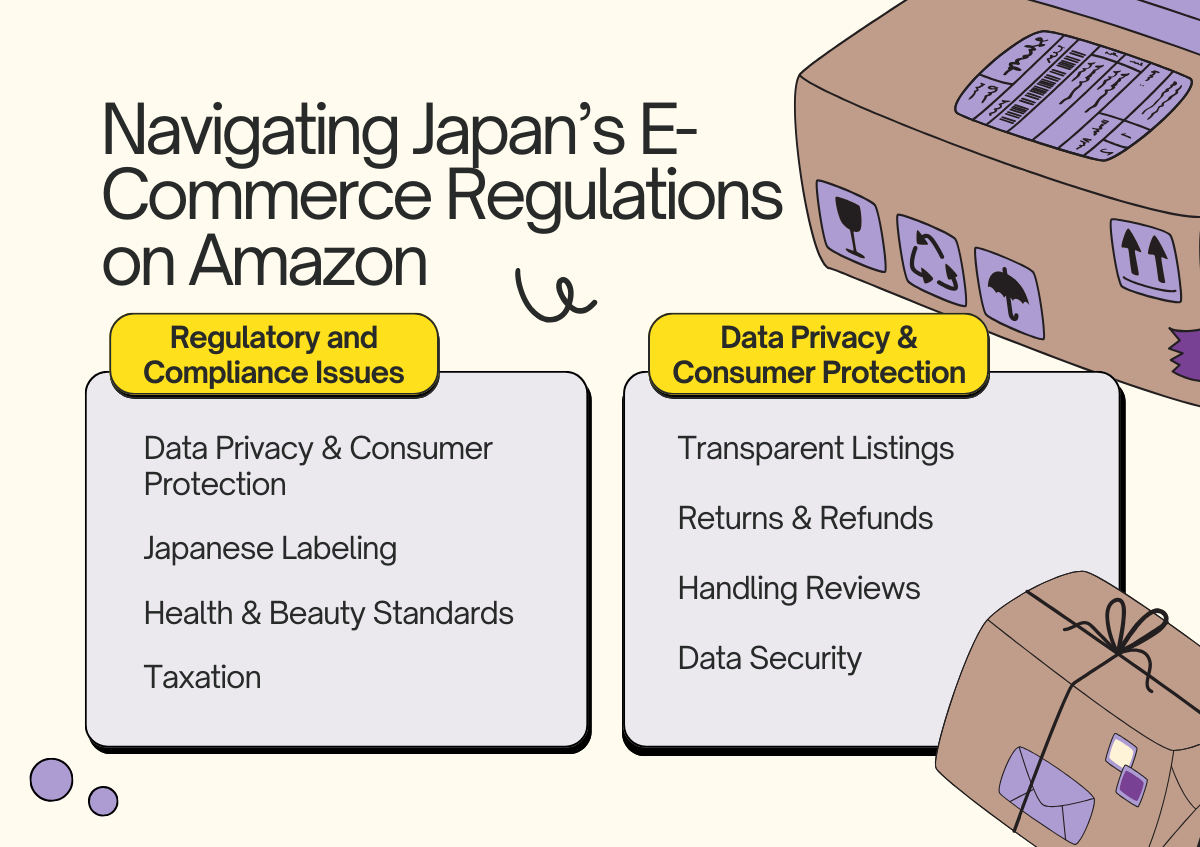
Selling on Amazon Japan offers massive potential, but success depends on more than listing products. International sellers must carefully navigate Japan’s strict regulatory landscape and consumer protection standards. Compliance is not optional; it’s a prerequisite for building credibility and avoiding costly penalties.
Regulatory and Compliance Issues
Japan enforces stringent regulations on product imports and labeling, particularly in sensitive categories such as cosmetics, health supplements, and electronics. Key requirements include:
- Import Standards – Products must comply with Japanese safety regulations, which may require certifications or modifications before entering the market.
- Japanese Labeling – All labels (ingredients, instructions, safety warnings, manufacturer details) must be in Japanese. Non-compliant packaging risks rejection at customs or removal from Amazon listings.
- Health & Beauty Standards – Items like skincare, supplements, or over-the-counter health products face additional scrutiny under the Pharmaceutical and Medical Device Act. Sellers should confirm category-specific rules before shipping.
- Taxation – International sellers may need to register for Japan’s Consumption Tax (10%), depending on their setup. Factoring taxes and import duties into pricing is essential for competitiveness.
Data Privacy & Consumer Protection
Japan places a high priority on consumer rights and data protection, and sellers must adhere to laws such as the Act on the Protection of Personal Information (APPI).
- Transparent Listings – Product descriptions must be detailed, accurate, and avoid misleading claims. Japanese buyers expect precision before making a purchase.
- Returns & Refunds – Sellers are obligated to honor fair return policies in line with Japan’s Consumer Contract Act. Fast, polite handling of returns is vital for maintaining trust.
- Handling Reviews – Customer reviews are central to purchase decisions in Japan. Sellers must avoid manipulative practices and instead focus on delivering quality that generates authentic positive feedback.
- Data Security – Any customer data (from email communications to order details) must be stored and handled in compliance with APPI standards.
Comparing Amazon Japan with Other Major E-Commerce Platforms in Japan

When navigating Japan's e-commerce landscape, Amazon Japan, Rakuten, and Yahoo! Shopping each offer distinct advantages and challenges. Amazon Japan is favored for its extensive logistics network, familiar interface for international sellers, and comprehensive support systems. In contrast, Rakuten provides a platform for greater brand customization and local engagement but requires a higher investment and more complex setup. Yahoo! Shopping, while offering unique marketing opportunities through its integration with Yahoo! Japan’s ecosystem, typically demands more hands-on management from sellers. Understanding these differences can help international businesses choose the platform that best aligns with their market strategy and operational capabilities.
Market Reach & Popularity
- Amazon Japan: ~626M monthly visits; seamless experience for sellers familiar with global Amazon systems.
- Rakuten: ~535M monthly visits; strong local presence, but requires heavy investment in storefront design and localization.
- Yahoo! Shopping: ~118M monthly visits; smaller but integrated into Yahoo! Japan’s powerful ecosystem (ads, media, search).
Cost Structure
- Amazon Japan: Predictable fees (4,900 yen/month Pro plan + referral fees 8–15%). FBA adds fulfillment costs but boosts Prime eligibility.
- Rakuten: High upfront costs (60,000 yen registration, 50,000 yen/month + system fees, Super Points, etc.). Better for brands ready to localize heavily.
- Yahoo! Shopping: Lower barrier to entry with flexible plans, but costs vary depending on marketing tools used.
Logistics & Fulfillment
- Amazon Japan: Industry-leading Fulfillment by Amazon (FBA) ensures fast, reliable shipping, returns, and Prime access.
- Rakuten: Sellers handle fulfillment or use third-party partners. More operational complexity for international companies without a local entity.
- Yahoo! Shopping: Minimal built-in logistics support; sellers must manage their own warehousing, shipping, and customer service.
Market Strategy & Seller Fit
- Amazon Japan: Best for fast entry. No Japanese entity needed if using FBA; familiar interface; substantial reach.
- Rakuten: Best for brand-building. Shop-centric model lets you design a full storefront but demands localization and higher investment.
- Yahoo! Shopping: Best for niche targeting. Works well when leveraging Yahoo! Japan’s ad network or targeting specific audiences.
Quick Comparison Table
Why Choose Amazon Japan?
For most international businesses, Amazon Japan is the fastest and least complex way to enter Japan’s e-commerce market. It offers:
- A massive customer base.
- World-class logistics.
- No need for a Japanese entity (with FBA).
- A familiar seller interface.
However, sellers with strong brand identities may benefit from Rakuten’s customization options, while niche players can find value in Yahoo! Shopping. Many successful global brands adopt a multi-platform strategy to maximize reach.
Strategies and Future Prospects for Success on Amazon Japan

Selling successfully on Amazon Japan requires two things: mastering the strategies that work today and preparing for the trends that will shape tomorrow. Japanese consumers are detail-oriented, brand-conscious, and highly selective, meaning that international sellers must adapt their approach to meet these expectations. At the same time, technology, sustainability, and digital media are reshaping how businesses connect with customers. Below, we break down both the current best practices and the emerging opportunities international sellers should focus on.
Current Strategies for Optimizing Amazon Japan Campaigns
To compete effectively in Japan right now, sellers should focus on four key areas:
- Localized and Trustworthy Listings
- Go beyond translation: use culturally relevant language, precise specifications, and high-resolution images.
- Highlight product quality and reliability, as these are top priorities for Japanese buyers.
- Leverage Reviews and Social Proof
- Encourage authentic, detailed customer reviews, as they heavily influence purchase decisions.
- Respond politely to negative feedback to demonstrate strong customer care.
- Smart Advertising and Promotions
- Optimize listings for the A9 algorithm with precise, formal keywords.
- Use Amazon’s ad tools (Sponsored Products, Sponsored Brands, Display ads, and Lightning Deals) to improve visibility.
- Plan promotions around seasonal events like Golden Week to capture peak demand.
- Build a Strong Brand Presence
- Invest in long-term trust through consistent service, clear communication, and thoughtful pricing.
- Use Fulfillment by Amazon (FBA) to guarantee fast, reliable shipping.
- Strengthen credibility with A+ Content, Storefronts, and Brand Registry.
Future Prospects and Emerging Trends on Amazon Japan
Looking ahead, sellers must stay agile and embrace innovation. The following trends are set to shape the future of Amazon Japan:
- Artificial Intelligence and Personalization
- AI and machine learning are driving personalized product recommendations, predictive analytics, and dynamic ad campaigns.
- Brands that use these tools will better connect with Japanese consumers’ demand for tailored experiences.
- Sustainability and Transparency
- Eco-friendly practices and transparent operations are becoming decisive factors in purchase decisions.
- Communicating sustainability initiatives can boost loyalty and brand reputation.
- Digital and Streaming Media Opportunities
- Platforms like Amazon Prime Video and Connected TV are opening new advertising frontiers.
- Interactive video ads and targeted digital campaigns will allow deeper engagement with Japanese audiences.
- Agility and Experimentation
- The most successful sellers will combine today’s proven practices with bold experiments in new technologies and strategies.
- Staying flexible will help businesses capture growth in Japan’s dynamic e-commerce market.
Conclusion: How Amazon Shapes the Future of Japanese Online Retail

Japan’s e-commerce landscape presents international businesses with both complexity and opportunity. Amazon Japan, with its vast logistics network, loyal Prime membership base, and strong consumer trust, offers one of the most direct ways to tap into this dynamic market. Yet, long-term success requires more than access; it demands cultural alignment, regulatory compliance, and a deep understanding of Japanese consumer behavior.
Looking forward, businesses that embrace personalization through AI, commit to sustainable practices, and explore new forms of digital engagement will be best positioned to thrive. While Rakuten and Yahoo! Shopping remain valuable alternatives depending on brand strategy, Amazon Japan’s reach and infrastructure make it an unparalleled gateway for international sellers.
By blending proven strategies with forward-looking innovation, companies can not only enter Japan’s e-commerce market but also establish a lasting presence in one of the most sophisticated consumer economies in the world.
Key Takeaways: Lessons from Amazon’s Success in Japan’s E-Commerce Industry
For businesses exploring Amazon Japan, these are the most critical points to remember:
- Amazon Japan’s Scale: With over 600 million monthly visits, it stands as one of Japan’s most powerful e-commerce platforms and a key entry point for global brands.
- Consumer Expectations: Japanese buyers value detailed product descriptions, authentic reviews, and reliable delivery; trust is the foundation of every purchase.
- Current Strategies: Success today requires localized listings, strong customer reviews, innovative use of Amazon’s ad tools, and consistent brand-building with FBA, Storefronts, and A+ Content.
- Future Trends: AI-driven personalization, sustainability, and new digital media advertising opportunities (like Prime Video and Connected TV) will shape the next phase of e-commerce in Japan.
- Platform Comparison: Amazon is the fastest route to entry, Rakuten is best for deep brand-building, and Yahoo! Shopping excels in niche targeting when paired with its ad ecosystem.
Partner with IGNITE to Accelerate Your Success in Japan

Breaking into the Japanese market is challenging, but you don’t have to do it alone. At IGNITE, we specialize in helping international businesses overcome language, cultural, and technical barriers to achieve tangible results in Japan. Based in Osaka, our multilingual team of Japanese and foreign marketing specialists understands both global business needs and local consumer expectations.
Whether you’re looking to localize your Amazon listings, run high-performance ad campaigns, or build a long-term brand presence, IGNITE provides the expertise and support to make it happen. From detailed market research and translation to full-scale content creation, advertising, web design, and project management, we act as your dedicated Japanese marketing division. Not just an outside agency.
Our mission is simple: to ignite your growth in Japan with speed, quality, and measurable results.
Ready to take your business to the next level in Japan?
Contact IGNITE today and let’s start building your success story on Amazon Japan and beyond.



